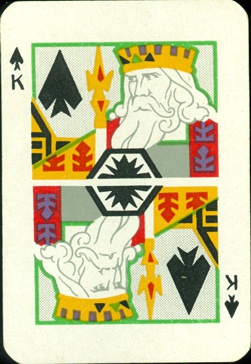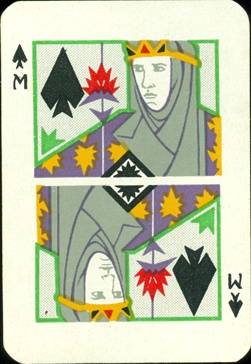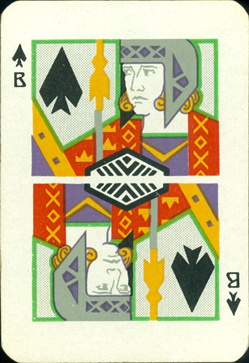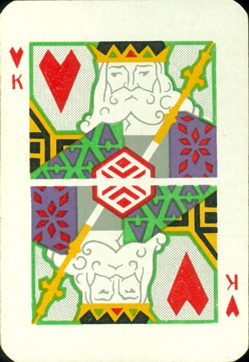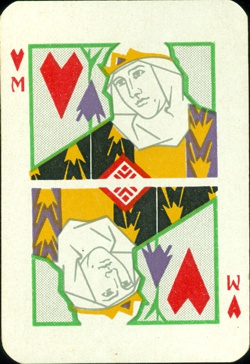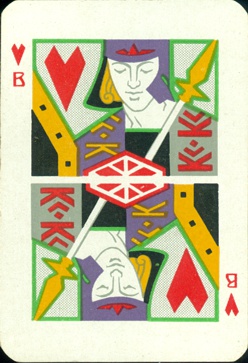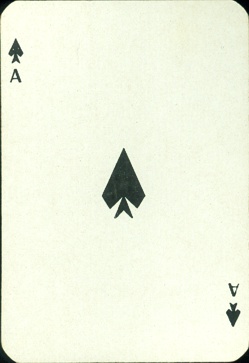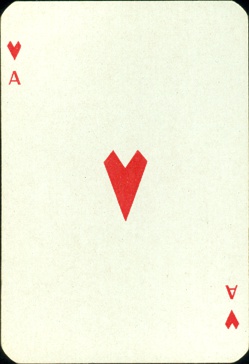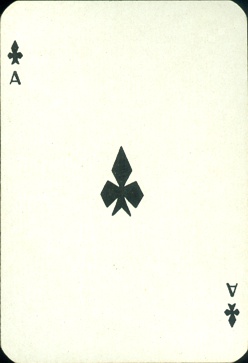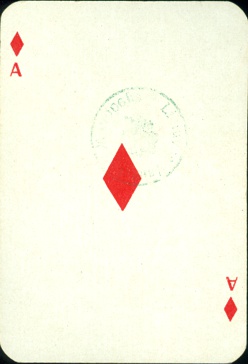March
2019
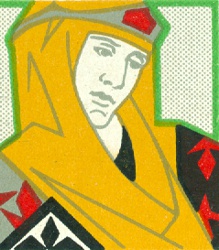 |
|
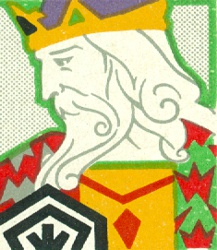
|
|
Due to all kinds of medical issues it took us about 6 months to get
from sorting by country to adding and integrating the decks in the
existing collection. This month I have done that with the Russian decks
and in the last week I started on the Baltic states. They used to be a
small addition in the Russian holders, but there were so many decks to
add, that they have earned a separate holder.
There were no new decks, so I had to choose from the decks that I had processed into our collection.
|
This deck was
published as "Klubams" in Lithuania around 1930. The title means
"for clubs". The deck was lithographically printed by the Spindulys
Printing House from Kaunas. The Spyndulis printing house, situated in
Kaunas, was formed by combining 3 print shops: Svyturis, Varpas and Raides.
Spyndulis started their production in 1928 and is still active at the present
moment, but mainly as a book printer. The card production stopped after WW II.
Lithuania
is one of the 3 small Baltic states, but has covered a much larger area in the
past. Around 1400 it was one of the largest countries in Europe. Halfway the
16th century it formed a commonwealth with Poland and this lasted until the
end of the 17th century, when the commonwealth was partitioned by Russia,
Prussia and Austria. Most of Lithuania was occupied by the Russian empire and
this lasted until the end of WW I, when Lithuania became an independent state
again. Not long before WW II started it was occupied by the Russians and
during WW II by the Germans. After the war had ended Lithuania became a Soviet
Republic under control of the Russian Soviet Union again until independence
was declared in March 1990. Since May 2004 it's a member of the European
Union.
This
deck could be seen as a sister-deck of the "Gedimino
Stulpai" (the Columns of Gediminas), which was our deck of the month in August
2018 (click and press 08). There's an overall resemblance in the modern
designs of both decks and in both decks these modern designs refer to the rich
history of Lithuania, i.e. before the Russian occupation. But the modernism in
design can also be seen as a way to celebrate the independence of Lithuania,
however short that turned out to be.
On
the WOPC site Tadas Jurys mentions that at that time the playing card
designers at Spindulys were Mstislavas
Dobužinskis (1875–1957) and Barbora Didžiokienė (1896 - 1976) and,
although there was no name or initials to be found on any of the cards, we
concluded that the deck must have been designed by one of them. In this deck the
joker shows the initials J and V. They can't refer to either of these 2
designers. So it's well possible that our conclusion from August 2018 was
premature. Well, whoever designed this deck, he/she did a great job!
Plain aces,
Lithuanian taxstamp on the Ace of Diamonds.
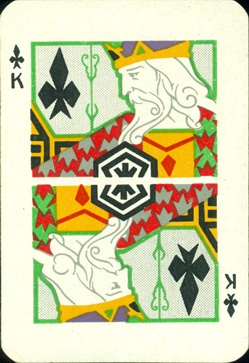 |
|
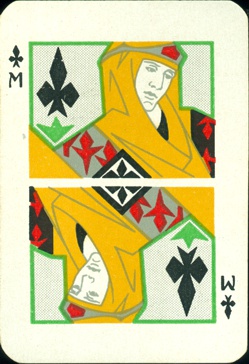
|
|
 |
|
|
|
Janis
Metra told us that the K in Lithuanian stands for Karalius (king), the
M for Mergele (maid/virgin) and the B for Berniukas (fellow). Here the
aces are indicated by an A, but in Lithuanian decks a T for Tuzas
(aces) can also be found. |
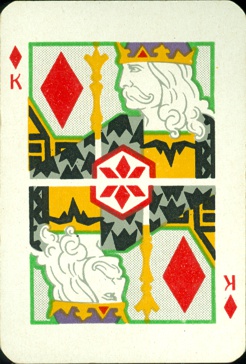
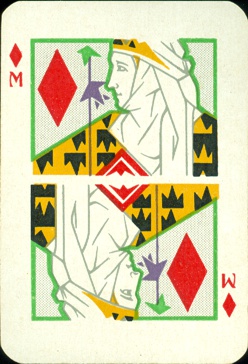
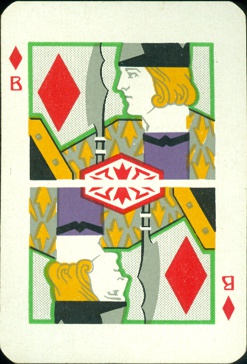
The deck consists
of 52 cards and 1 joker.
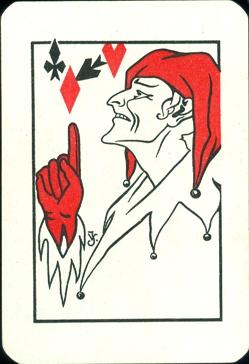
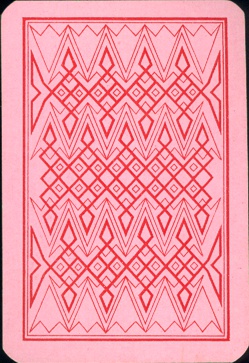
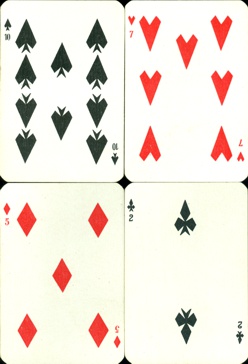
BACK
TO PRESENT MONTH


